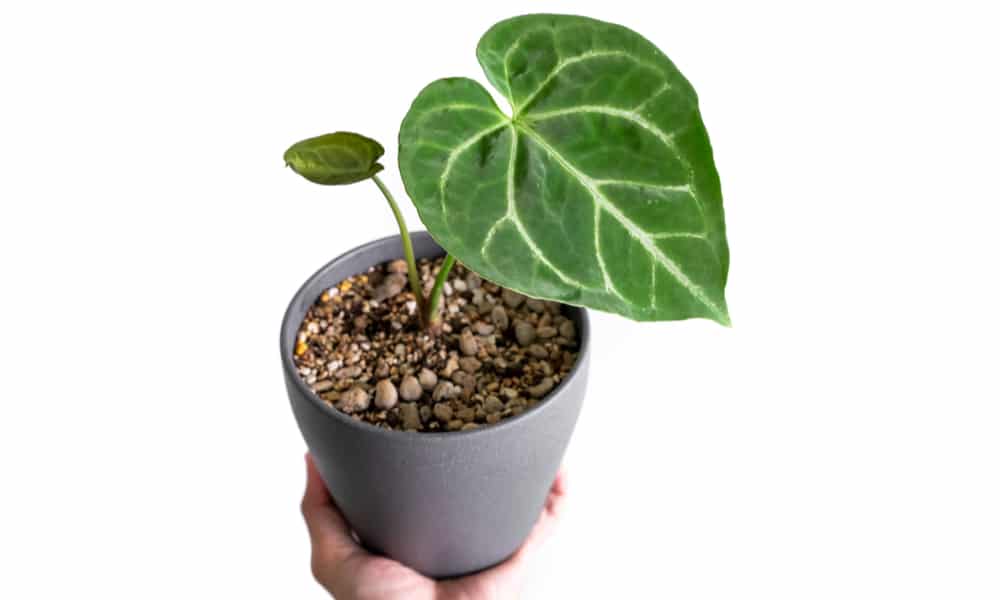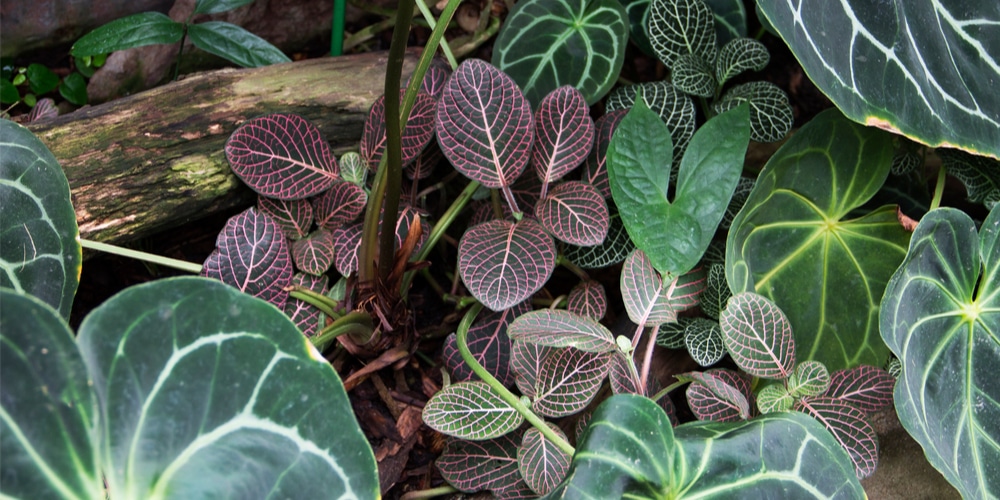Anthurium magnificum is a Columbian plant that is commonly kept as a houseplant. It can also be grown outdoors in USDA zones 9a to 11. These plants are epiphytic perennial, which are often found in the wild, clinging to other plant species. They are evergreen and have lovely foliage.
Juvenile leaves start off a burgundy color and mature to dark green. The leaves of the Anthurium magnificum are large and can grow to be between six and ten inches long. The leaves have a leathery texture and raised white veins. The Anthurium magnificum flowers regularly throughout the year and produce lovely tropical flowers.
Let’s look at the Anthurium magnificum’s features. We’ll also tell you how to grow and care for an Anthurium magnificum in your home.
What is an anthurium magnificum
The Anthurium magnificum is part of the Araceae family, which includes various epiphytic and terrestrial plants. This common house plant often goes by the name of laceleafs due to its veined leaf, or tail flowers, or flamingo flower plant. It is reasonably fast-growing and can grow up to inches tall. Anthurium magnificum can be grown indoors or can be added to a tropical landscape if you live in a warmer climate.
The plant has a stem that’s centrally located and is able to support its large leaves. The Anthurium magnificum varies slightly from others in the anthurium family as it produces lots of flowers throughout the year. The flowers are gorgeous and are usually white, cream, or a pale green color.
Another difference between the magnificum and other varieties is that the plants steam that joins the leaves to the main steams, known as the petioles that are c shaped and quadrangular. They also have lighter veins than many anthurium varieties.
If you have pets or young children, it’s worth noting that the Anthurium magnificum is toxic if ingested by animals and people. Just like other species of anthurium and many other varieties of tropical plants, the Anthurium magnificum contains calcium oxalate crystals which can cause vomiting.
Caring for an anthurium magnificum plant
Anthurium magnificum plants have very similar care requirements as other varieties of anthurium. These plants have particular watering and temperature requirements. Here are some tips to help you care for your plant correctly:
Watering
The exact amount of water your Anthurium magnificum will need depends on the climate and weather conditions. These plants will need more water on hotter days. These plants should be watered regularly in small amounts. After watering, you can leave their soil to dry out before watering again.
During the growing season, from early spring until the beginning of Fall, you should provide your plant with water two or three times a week. Give you plant slightly more water on hotter days and reduce when the weather starts to cool down.
At the beginning of fall, when the weather colder, your plant will only need to be watered every two weeks. Water your plant as soon as its soil feels completely dry.
Sunlight and temperature
All varieties of anthuriums love to be in bright indirect sunlight. These plants shouldn’t be left in the direct sun, or they may burn and become discolored. These plants have very sensitive leaves, and in the worst cases, exposure to sunlight could kill your plant. The best temperature for an Anthurium is between 65 and 70F.
During the fall and winter, the Anthurium magnificum can live in partial shade as it will go into dormancy. These plants aren’t very hardy when it comes to the cold. In left in temperatures that fall below 55F, your plant will freeze. If you’re growing your plant outside, it’s worth mothing it into a greenhouse or your home in the fall. Keep your Anthurium magnificum somewhere with good air circulation but ensure your plant isn’t left in a draft from your air conditioner. It also shouldn’t be placed too close to heaters.
Humidity
Anthurium magnificum like humidity and should be grown in areas with high levels of moisture. Many people leave their plants in the bathroom or kitchen as the atmosphere is moister. In nature, the Anthurium magnificum grows in areas with 60 to 70% humidity.
If you live in an area with lower humidity, you can mist your plants, use a pebble tray or invest in a humidifier. Be careful not to make your plant too wet, or its leaves may start to rot or be affected by fungal growth.
Soil
Anthurium magnificum requires a neutral soil PH, which is between 6.6 and 7.5. The soil should be well-drained and have plenty of nutrients. It should also be able to retain water. There are commercial Anthurium soil mixes available, or you can use a house plant potting soil that contains perlite. To help the soil drain, you can add mulch, gravel, stones, or sphagnum moss to the bottom of your pot.
Anthurium magnificum has an extensive root system, so it’s best to use a spacious pot.
Fertilizer
This plant requires enough nutrients to grow well. You can use a house plant fertilizer throughout the growing season. On average, you may need to feed your plant once a month. You can stop fertilizing your plant in the fall when the weather gets colder.
Propagation
Anthurium magnificum can be easily propagated by dividing the plant. It’s best to propagate in the early spring at the beginning of the growing season. To propagate carefully:
- Remove the plant from its pot and separate it from the roots up.
- Ensure that each piece you remove from the main plant has two to three leaves, as well as healthy roots.
- Plant the small plantlets in a moist aerated potting mix.
This plant is also closely related to Anthurium Clarinervium and Anthurium Gloriosum.
Conclusion
Anthurium magnificum is a popular tropical houseplant that has lovely green foliage and big leaves. It can also be grown outside in the right conditions. It’s worth noting that these lovely plants are toxic if consumed, so it’s best that they are kept away from pets and young children.

